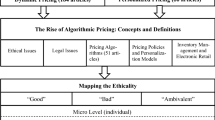Abstract
Quantitative methods are derived to assist buyers purchasing commodities in fluctuating price markets. Demand is known whilst price is a stochastic variable which may contain trends or seasonal fluctuations. The essential feature of the problem is that the buyer has many opportunities to make a purchase.
Mathematical models are formulated to describe particular commodity buying problems. The optimal purchasing policy is derived by using dynamic programming. It consists of a set of discrete price breaks at each buying opportunity together with the associated stock levels the buyer should aim to achieve at each price break with his purchase at this opportunity. The price breaks are dependent on the probability density functions of future prices and the number of future buying opportunities. Recurrence relations are derived to calculate these price breaks. The case of restrictions on the purchase quantity at each price offer, either because of supply limitations or by the buyer as a policy decision, and price discounts are also considered.
A case study illustrating the techniques is given and the methods are extended to purchasing for a blending problem with substitutable commodities.
Similar content being viewed by others
Author information
Authors and Affiliations
Rights and permissions
About this article
Cite this article
Kingsman, B. Commodity Purchasing. J Oper Res Soc 20, 59–79 (1969). https://doi.org/10.1057/jors.1969.29
Published:
Issue Date:
DOI: https://doi.org/10.1057/jors.1969.29




